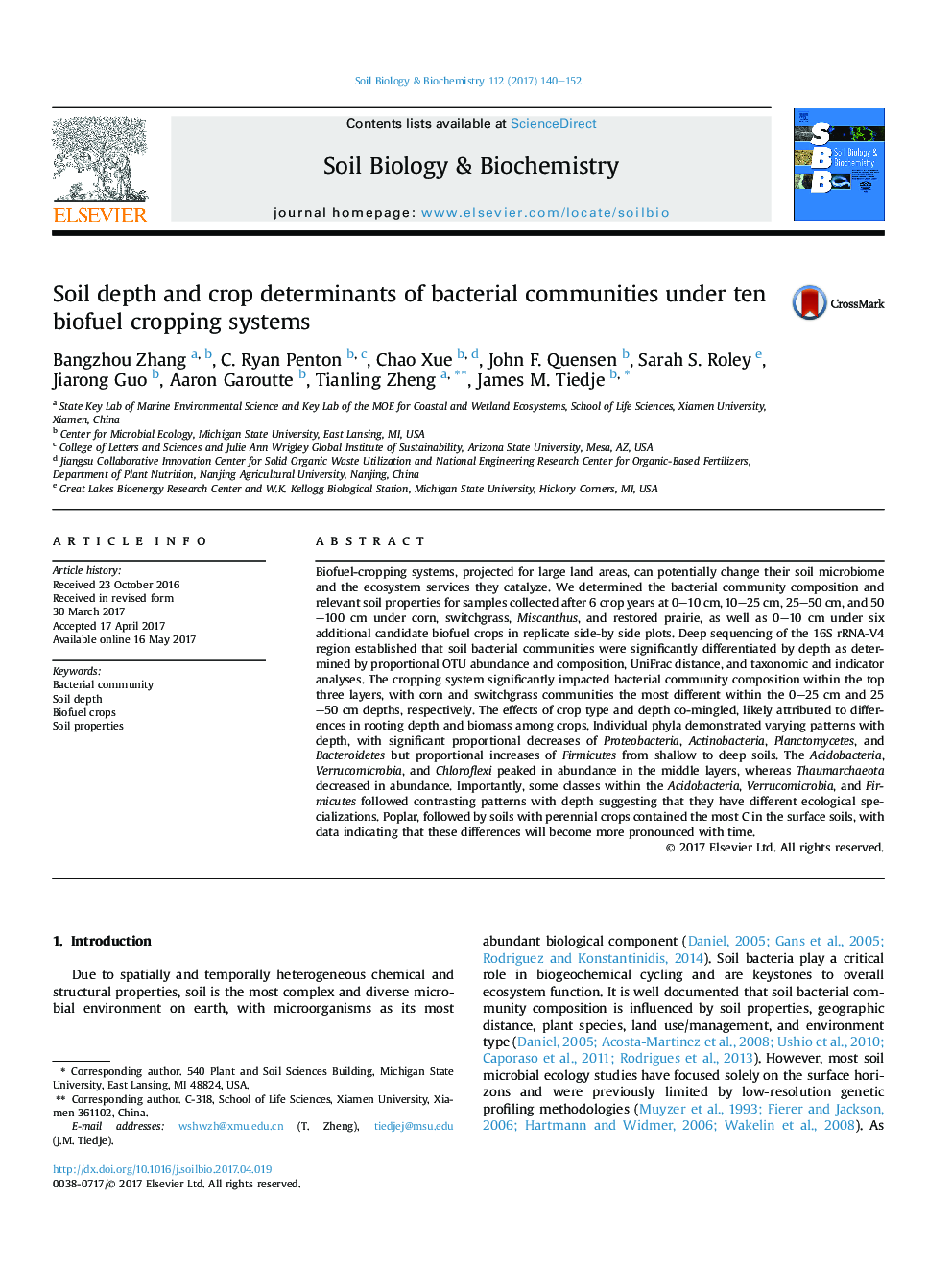| کد مقاله | کد نشریه | سال انتشار | مقاله انگلیسی | نسخه تمام متن |
|---|---|---|---|---|
| 5516345 | 1542572 | 2017 | 13 صفحه PDF | دانلود رایگان |
• Biofuel crops and soil depth were co-mingled in shaping soil bacterial communities.
• Biofuel crop effects reached to 50 cm depth after 6 growing seasons.
• Some classes within the same phyla followed contrasting patterns with depth.
• Different taxa patterns with depth suggest their different physiologies.
• Perennial crops contained more C than annual crops in the surface soils.
Biofuel-cropping systems, projected for large land areas, can potentially change their soil microbiome and the ecosystem services they catalyze. We determined the bacterial community composition and relevant soil properties for samples collected after 6 crop years at 0–10 cm, 10–25 cm, 25–50 cm, and 50–100 cm under corn, switchgrass, Miscanthus, and restored prairie, as well as 0–10 cm under six additional candidate biofuel crops in replicate side-by side plots. Deep sequencing of the 16S rRNA-V4 region established that soil bacterial communities were significantly differentiated by depth as determined by proportional OTU abundance and composition, UniFrac distance, and taxonomic and indicator analyses. The cropping system significantly impacted bacterial community composition within the top three layers, with corn and switchgrass communities the most different within the 0–25 cm and 25–50 cm depths, respectively. The effects of crop type and depth co-mingled, likely attributed to differences in rooting depth and biomass among crops. Individual phyla demonstrated varying patterns with depth, with significant proportional decreases of Proteobacteria, Actinobacteria, Planctomycetes, and Bacteroidetes but proportional increases of Firmicutes from shallow to deep soils. The Acidobacteria, Verrucomicrobia, and Chloroflexi peaked in abundance in the middle layers, whereas Thaumarchaeota decreased in abundance. Importantly, some classes within the Acidobacteria, Verrucomicrobia, and Firmicutes followed contrasting patterns with depth suggesting that they have different ecological specializations. Poplar, followed by soils with perennial crops contained the most C in the surface soils, with data indicating that these differences will become more pronounced with time.
Journal: Soil Biology and Biochemistry - Volume 112, September 2017, Pages 140–152
